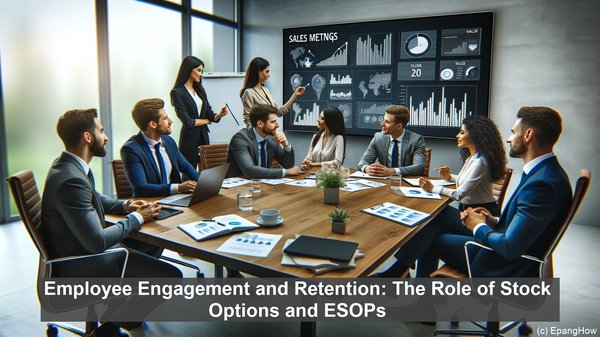Introduction: The World of Corporate Compensation
Hello everyone! Welcome to our article on the differences between stock option plans and employee stock ownership plans. In the realm of corporate compensation, companies employ various strategies to reward and incentivize their employees. Two popular approaches are stock option plans and employee stock ownership plans (ESOPs). While both involve company shares, they have distinct characteristics and serve different purposes. Let’s dive in!

Stock Option Plans: A Path to Future Ownership
A stock option plan is a compensation structure that grants employees the right to purchase company shares at a predetermined price, known as the exercise price, within a specified timeframe. This timeframe is often referred to as the vesting period. The exercise price is typically set at the market value of the shares on the grant date. The idea behind stock options is to provide employees with an opportunity to benefit from the company’s growth and success. As the company’s stock price rises, employees can exercise their options, buying the shares at the exercise price and potentially selling them at a higher market price, thus realizing a profit.
Employee Stock Ownership Plans (ESOPs): A Stake in the Company
On the other hand, an employee stock ownership plan, or ESOP, is a structure where employees are granted company shares outright, often as part of their retirement benefits. Unlike stock options, which require employees to purchase the shares, ESOPs provide them directly. ESOPs are typically established as a trust, with the company contributing shares to the trust on behalf of the employees. Over time, as the company’s value increases, so does the value of the shares held by the employees. When employees retire or leave the company, they can sell their shares back to the company or on the open market, providing them with a financial cushion for the future.
Key Distinctions: Ownership and Risk
One of the primary differences between stock option plans and ESOPs is the aspect of ownership. With stock options, employees have the right to purchase shares, but they are not immediate owners. On the other hand, ESOPs grant employees direct ownership of the shares. This distinction has implications for voting rights and decision-making within the company. ESOP participants often have a say in major corporate decisions, as they are shareholders. In terms of risk, stock options carry a higher level of risk. If the company’s stock price declines, the options may become less valuable, and employees may choose not to exercise them. With ESOPs, the risk is more diversified, as employees hold a portfolio of company shares.

Tax Considerations: Stock Options vs. ESOPs
From a tax perspective, stock options and ESOPs also differ. Stock options are generally taxed at the time of exercise, based on the difference between the exercise price and the market price. This is known as the spread. If employees hold the shares for a certain period, they may qualify for more favorable capital gains tax rates when they eventually sell the shares. ESOPs, on the other hand, offer potential tax advantages. Contributions made by the company to the ESOP are often tax-deductible, and employees may be able to defer taxes on the shares until they are sold, potentially resulting in lower tax liability.
Employee Engagement and Retention: The Role of Stock Options and ESOPs
Both stock option plans and ESOPs can play a significant role in employee engagement and retention. Stock options, with their potential for financial gain, can be a powerful motivator, especially in high-growth companies. They align the interests of employees with the company’s performance, fostering a sense of ownership and commitment. ESOPs, on the other hand, can create a strong bond between employees and the organization. As employees become direct shareholders, they often develop a deeper connection to the company’s mission and long-term success. This can contribute to higher employee loyalty and lower turnover rates.
